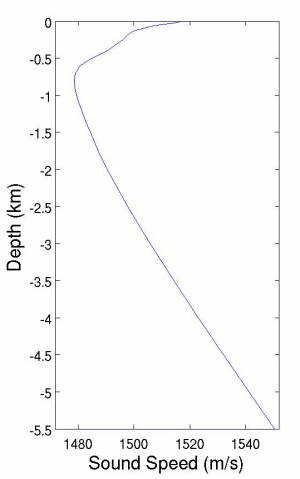Conductivity, temperature, depth sensors are used by oceanography to calculate the velocity of sound at varying depths.
These measurment values are used to comprise sound velocity profiles like the one below to increase the presition of deep water sonars.

My question is, how is the actual calculation from conductivity, temperature and depth to sound velocity conducted?
